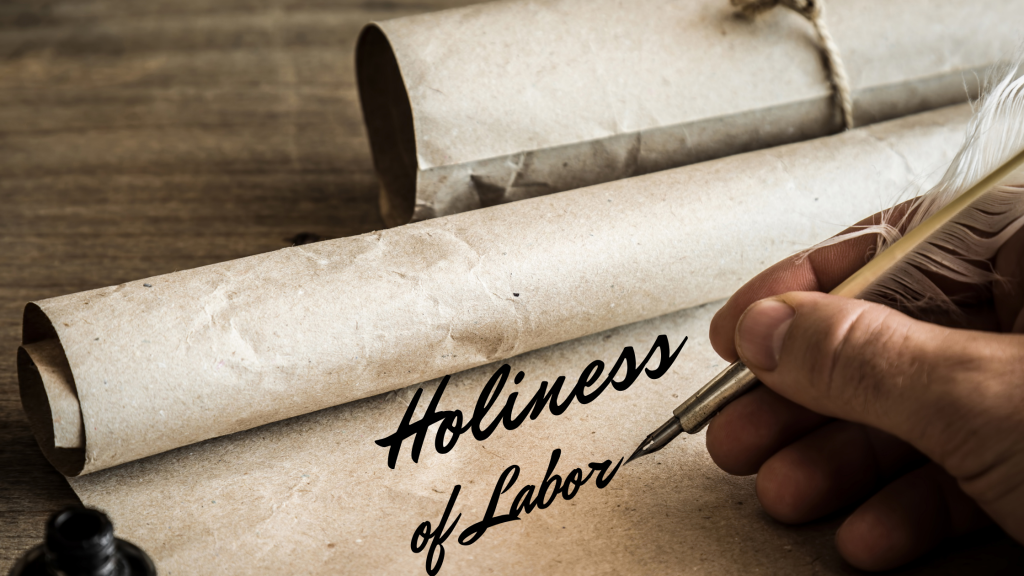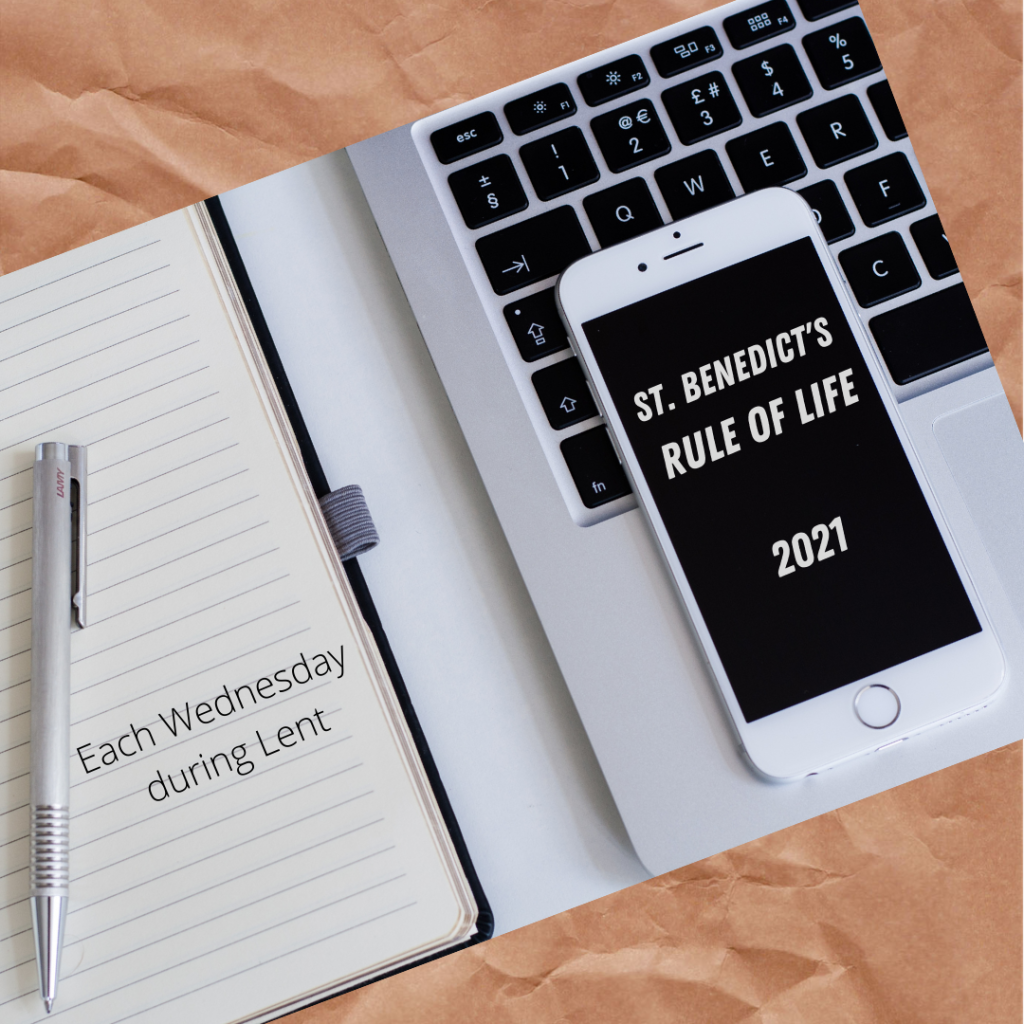Confession
Biblical Reference
In the Judeo-Christian tradition, confession is the acknowledgment of sinfulness in public or private, regarded as necessary to obtain divine forgiveness. The need for confession is frequently stressed in the Hebrew Bible. The origins of the Judeo-Christian tradition of confession are very ancient. In the Hebrew Bible, an early example of confession on behalf of the entire congregation is found in the tradition of the scapegoat: “Aaron shall confess over him all the iniquities of the children of Israel, and all their transgressions in all their sins” (Leviticus 16:21). Personal sins also sometimes required forgiveness before the person could atone by bringing an offering to the priestly altar: “When anyone is guilty in any of these ways, he must confess in what way he has sinned and, as a penalty for the sin he has committed, he must bring to the Lord a female lamb or goat from the flock as a sin offering; and the priest shall make atonement for him for his sin” (Lev. 5:5-6). Sins against another human being also required confession: “When a man or woman wrongs another in any way and so is unfaithful to the Lord, that person is guilty and must confess the sin he has committed. He must make full restitution for his wrong, add one fifth to it and give it all to the person he has wronged” (Num. 5:6-7).
The Israelites are described as confessing their sin of idolatry before God at Mizpah in 1 Samuel 7:6, and the Book of Nehemiah (chapter 9) portrays the confession of both individual and collective sins by the Jews as an important part of the spiritual renewal process for the exiles returning from Babylon. Confession and forgiveness is also a theme found in Psalms and Proverbs. The mission of the Jewish prophets was to awaken in the people a sense of sinfulness and an acknowledgment of their personal and collective guilt. Before the destruction of the Temple of Jerusalem (70 CE), the sin offerings on the Day of Atonement (Yom Kippur) were prefaced by a collective expression of sinfulness (Leviticus 16:21), and, since the destruction of the Temple, the Day of Atonement has continued in Judaism as a day of prayer, fasting, and confession.
In the New Testament, the public ministry of Jesus was prepared for by John the Baptist, who baptized the people; the baptism was accompanied by a public confession of sins (Matthew 3:6). The necessity of confession is discussed in many places in the New Testament (James 5:16; 1 John 1:9), although there is no direct evidence that confession had to be specific or detailed or that it had to be made to a priest. These details are added as the Sacrament evolves through time.
Episcopal Relevance
The sacrament of confession and absolution in the Episcopal Church is usually a part of corporate worship, particularly at liturgies of the Holy Eucharist. The form involves an exhortation to repentance by the priest, a period of silent prayer during which believers may inwardly confess their sins, a form of general confession said together by all present, and the pronouncement of absolution by the priest, often accompanied by the sign of the cross.
Episcopalians also practice private confession through the traditional confessional venue or, more frequently, in a private meeting with the priest. This practice permits a period of counseling and suggestions of acts of penance. Following the confession of sins and the discussion of remedies, the priest pronounces absolution. As with Roman Catholicism, the seal of the confessional is absolute, and any confessor who divulges information revealed in confession is subject to deposition and removal from office.
Historically, private confession was highly controversial within Anglicanism as the denomination was creating its theology separate from the Roman Catholic Church. Though still not widely practiced, private confession within the Episcopal Church became accepted in the second half of the twentieth century with the acceptance of the 1979 Book of Common Prayer.
In the Episcopal tradition, private confession is not required, but a common understanding is that it may be desirable depending on individual circumstances.
“All may; none must; some should.”
Concerning the Rite (p. 446, 1979 Book of Common Prayer)
The ministry of reconciliation, which has been committed by Christ to his Church, is exercised through the care each Christian has for others, the common prayer of Christians assembled for public worship, and the priesthood of the church and its ministers declaring absolution.
The Reconciliation of a Penitent is available for all who desire it. It is not restricted to times of sickness. Confessions may be heard anytime and anywhere.
Two equivalent forms of service are provided here to meet the needs of penitents. The absolution in these services may be pronounced only by a bishop or priest. Another Christian may be asked to hear a confession, but it must be made clear to the penitent that absolution will not be pronounced; instead, a declaration of forgiveness is provided.
When a confession is heard in a church building, the confessor may sit inside the altar rails or in a place set aside to give greater privacy, and the penitent kneels nearby. If preferred, the confessor and penitent may sit face to face for a spiritual conference leading to absolution or a declaration of forgiveness.
When the penitent confesses all serious sins troubling the conscience and has given evidence of due contrition, the priest provides counsel and encouragement and pronounces the absolution. Before giving absolution, the priest may assign to the penitent a psalm, prayer, or hymn to be said or something to be done as a sign of penitence and an act of thanksgiving.
The content of a confession is not usually a matter of subsequent discussion. The secrecy of a confession is morally absolute for the confessor and must under no circumstances be broken.
Glossary
Sacraments
Outward and visible signs of inward and spiritual grace, given by Christ as sure and certain means for receiving God’s grace. Baptism and Eucharist are the two great sacraments given by Christ to his church. The Episcopal Church recognizes that five other sacramental rites evolved in the church under the guidance of the Holy Spirit, including Confirmation, Ordination, Holy Matrimony, Reconciliation of a Penitent, and Unction (the anointing of the sick with oil, or the laying on of hands).
Sacramental Rites
The sacramental rites of the Episcopal Church include Confirmation, Ordination, Holy Matrimony, Reconciliation of a Penitent, and Unction (BCP, pp. 860-861). These rites are distinguished from the sacraments of Baptism and Eucharist, which were given by Christ and are understood to be necessary for the Christian life of all persons. The Roman Catholic Church recognizes seven sacraments, including Baptism, Eucharist, and the five other sacramental rites. Peter Lombard (c. 1095-1160) identified these seven rites as church sacraments. This position was affirmed by the Council of Florence (1439) and the Council of Trent (1545-1563). The Orthodox Church also accepts seven sacraments. Martin Luther (1483-1546) was willing to identify Reconciliation of a Penitent as a sacrament, in addition to Baptism and Eucharist. In 1521, Henry VIII was awarded the title “Defender of the Faith” by Pope Leo X in recognition of Henry’s treatise Assertio Septem Sacramentorum (Assertion of the Seven Sacraments), which defended the doctrine of the seven sacraments against Luther. After the English Reformation, marriage and the Reconciliation of a Penitent were presented as sacraments by some Elizabethan homilies and formularies. Article XXV of the Articles of Religion acknowledged Baptism and the Lord’s Supper as the two sacraments ordained by Christ in the gospel. Article XXV states that the five other sacramental rites “have not like nature of Sacraments with Baptism, and the Lord’s Supper, for they have no visible sign or ceremony ordained of God” (BCP, p. 872). The five sacramental rites are not understood to be necessary for all Christians.
ALL MAY, SOME SHOULD, NONE MUST
Reconciliation of a Penitent
Sacramental rite in which those who repent may confess their sins to God in the presence of a priest and receive the assurance of pardon and the grace of absolution (BCP, p. 861). It is also called penance and confession of sin. The church’s ministry of reconciliation is from God, “who reconciled us to himself through Christ and has given us the ministry of reconciliation” (2 Cor 5:18). The ministry of reconciliation has been committed by Christ to the church. It is exercised through the care each Christian has for others, the common prayer of Christians assembled for public worship, and the priesthood of the church and its ministers declaring absolution (BCP, p. 446). The Reconciliation of a Penitent is not limited to times of sickness. Confessions may be heard at any time and any place.
The BCP provides two forms of service for the Reconciliation of a Penitent. Only a bishop or priest may pronounce absolution. A declaration of forgiveness may be used by a deacon or layperson who hears a confession. When a confession is heard in a church building, the confessor may sit inside the altar rails while the penitent kneels nearby. The confession may be heard in a place set aside for greater privacy. It is also appropriate for the confessor and penitent to sit face to face for a spiritual conference that leads to absolution or a declaration of forgiveness. After the penitent has confessed all serious sins troubling the conscience and given evidence of contrition, the priest offers counsel and encouragement before pronouncing absolution. Before pronouncing absolution, the priest may assign a psalm, prayer, or hymn to be said or something to be done as a sign, penitence, and act of thanksgiving.
The 1979 BCP is the first American Prayer Book to provide forms for the Reconciliation of a Penitent as a separate office. Form One (p. 447) is shorter and less elaborate than Form Two (p. 449), which includes material similar to the Byzantine form for confession. Form Two begins with Psalm 51 and the Trisagion verses, including scriptural words of comfort. A rubric in Form Two also directs that the priest lay a hand upon the penitent’s head or extend a hand over the penitent at the absolution. This gesture also may be used at the absolution in Form One. The secrecy of the confession is morally absolute for the confessor and must not be broken (BCP, p. 446).
Absolution
The formal act by a bishop or priest of pronouncing God’s forgiveness of sins through Jesus Christ. The absolution of sins reflects the ministry of reconciliation committed by Christ to the church. Absolution may be pronounced following private confession of sins, as provided by the two forms for The Reconciliation of a Penitent in the BCP (pp. 447-452). Absolution may also be pronounced following a general confession of sin in the Holy Eucharist, the Daily Offices, the Ash Wednesday service, and the Penitential Order. The BCP provides that a deacon or layperson may make a “Declaration of Forgiveness” by God of the penitent’s sins after private confession. A deacon or layperson may pray for God’s forgiveness following the general confession in the Daily Offices.
Confession of Sin
An acknowledgment of sin, as in Ps 51: “Against you only have I sinned and done what is evil in your sight.” Confessions of sin during the liturgy are general, made by all the people. The church also provides for confessions of sin by individual penitents and their absolution, pronounced by a bishop or priest. A declaration of forgiveness may be stated by a deacon or layperson who hears a confession. The BCP provides two forms of service for the Reconciliation of a Penitent (p. 447, 449). The Reconciliation of a Penitent is one of the church’s sacramental rites (p. 861). The secrecy of the confession is morally absolute for those who hear a private confession. See Reconciliation of a Penitent.
Confessor
The term has two meanings: 1) One who suffers greatly for confessing the faith without being martyred, and 2) the bishop or priest who hears a private confession of sin.
Contrition
Full repentance for sin and a firm intention for amendment of life. Contrition is motivated by the love of God, causing the penitent to regret sin as evidence of a turning away from God, who loves us.
Historical Relevance
As you might imagine, the historical role and importance of healing rituals have declined as medical science has developed. In ancient biblical times, disease or any physical, emotional, or mental crisis was directly correlated with that person’s “favor” with the LORD. Faith, therefore, was the foundation for healing. Faith and healing was seen as one. If a person was not healed, it was solely because they had no faith or sinned (or a family member had sinned).
2nd Century C.E.
The Apostles’ teachings suggested confessing our sins. Tertullian, a Christian Writer, in De Poenitentia, called this sense of confession our “Second Penitence” receivable only once. The first penitence is baptism.
3rd Century C.E.
The Sacrament of Reconciliation emerges in a recognizable form during the 3rd Century. The penitent confesses their sins to the whole community, is temporarily excommunicated, eats plain foods, participates in almsgiving, and asks the community to pray for them. When the Bishop decides they have paid their due, they are restored to full communion.
4th Century C.E.
The Council of Nicaea (325 C.E.) places the forgiveness of grave sins under the Bishop’s authority. The penitent had to:
- Listen outside the door for three years
- Prostrate for seven years
- Take part in divine worship inactively, nor participate in the Eucharist for two years
- The process was ended on Holy Thursday by a bishop.
- Penance was only available once in a lifetime
5th Century
Around 408 C.E., Augustine of Hippo wrote about three kinds of penance:
- The removal of previous sin through Baptism
- The daily removal of sin through prayer and fasting for minor sins
- Formal, one-time confession of a deadly and serious sin publicly.
6th Century C.E.
Irish Monks developed a form of penance involving:
- Private confession to a spiritual father
- Restoration of a balance of “Moral Universe” through penance
- Private prayer seeking forgiveness
The practice of simply confessing once was ended with the Monks, and an attitude of punishment fitting the crime developed.
7th Century
650 C.E.: Council of Chalons-sur-Saône, 650 C.E.
The council affirmed the Monastic approach to confession and attempted to establish Episcopate (Bishop’s) control over it.
Late 7th Century: Theodore of Tarsus (Bishop of Canterbury) writes penitential books outlining what people had to do for penance for their sins. People realized that this penance could be shared, and so forth, and paid others to share it. For example, paying for someone else to fast with you.
12th Century
1170: The notion of Purgatory is created
1215: Fourth Lateran Council
- The council established that all Christians, once past the age of discernment, should confess their sins at least once a year. They established that the penalty for a priest breaking the secrecy seal would be deposed and made to live in a closed monastery for “perpetual penance.”
15th Century
1439: Council of Florence
- Established that the penitent should:
- Show contrition of heart and not do the sin again
- Partake in an Oral confession of sin
- Achieving satisfaction through prayer, fasting, and almsgiving
- The minister of the sacrament is a priest
16th Century
1549: The first Anglican Book of Common Prayer
The Anglican tradition suggests that you should receive the gift of confession when your conscience is especially troubled. In the 1549 Book of Common Prayer (which does not contain a standalone rite for confession), there is a provision in the Order for the Visitation of the Sick for a sick person to make a special confession (and the priest to pronounce absolution), “if he feels his conscience troubled with any weighty matter.” The 1549 Book of Common Prayer goes on to recognize that, while some Christians will find they need sacramental confession, others will find “their humble confession to GOD, and the general confession to the church” sufficient to satisfy their conscience; neither group is to judge the other so that charity might be preeminent in all things.
1551: Council of Trent
- The Council consecrated the sevenfold sacramental system and decreed penance as the forgiveness of sins.
- The Council pushed for extreme non-communal confession and a more individualistic approach to reconciliation with God.
20th Century
1964: Vatican II
It impinged the overall sense that sacramental penance reconciled sinners with God and the church community.
1965: The Rise of the Hippy Movement
In the mid-1960s, the Hippie movement began to grow. People began to question why and became more “free.” Religiosity is replaced with free thought.
1973: Ordo Paenitentiae released in the Roman Catholic Church
Introduced “The Sacrament of Reconciliation” as the official name of the sacrament. The absolution formula now states: “God, the Father of mercies, through the death and resurrection of his Son, has reconciled the world to himself and sent the Holy Spirit among us for the forgiveness of sins. Through the ministry of the church, may God give you pardon and peace, and I absolve you from your sins in the name of the Father, and of the Son, and of the Holy Spirit.”
Theological Relevance
Sacramental confession is a good gift of God to the Church. Making your confession is the remedy to an acutely troubled conscience. It is a formidable weapon in the fight against sin and the pursuit of holiness. It cultivates humility, discourages self-deception, and renews the joy of baptism. Martin Thornton (November 11, 1915 – June 22, 1986) was an English Anglican priest, spiritual director, author, and lecturer on ascetical theology; once wrote, “Is it not just a little silly, and flagrantly inefficient, to cut the lawn with nail scissors when God has taken the trouble to supply a very workmanlike motor mower?”
ALL may, NONE must, SOME should







